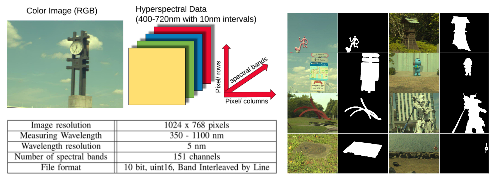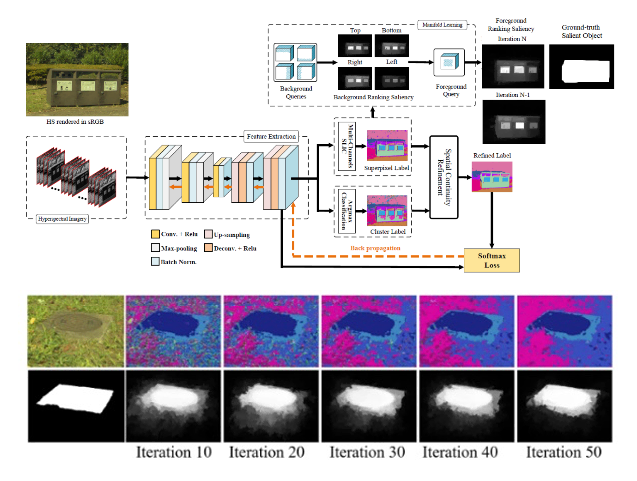In this work, we proposed a salient object detection model on hyperspectral images by applying manifold ranking (MR) on self-supervised Convolutional Neural Network (CNN) features (high-level features) from unsupervised image segmentation task. Self-supervision of CNN continues until saliency maps converges to a defined error between each iteration. We demonstrated that proposed model can better accuracy compared with the state-of-the-arts hyperspectral saliency models including the original MR based approach. Moreover, we prepared and released a dataset for benchmarking, and proposed model is also tested and compared with existing hyperspectral saliency approaches on it.
Dataset contains:


Visual attention mechanism is an important part of the human visual system enabling us to process large amount of information by focusing on distinctive visual regions to observe and analyze the scene. Moreover, attention process can be task-independent or task-dependent in its nature meaning that it can also help to find out attentional semantic information or low-level distinctive features.
Computational models to try similar behavior tries to generate attention maps so called saliency map in the field of computer vision, which can help to improve many vision task for various sensory information including the data from hyperspectral camera.
Other than the salient object detection, possible applications in hyperspectral imaging can be :
| 研究開発プロジェクト | NEDO 人工知能技術適用によるスマート社会の実現の成果 |
| 研究機関 | 国立研究開発法人 産業技術総合研究所 |
| 主要研究者 | Nevrez Imamoglu |
| 関連URL | https://github.com/gistairc/HS-SOD |